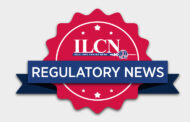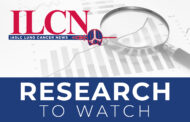Fulzerasib Becomes China’s First Approved KRAS G12C Inhibitor
On August 21, China’s National Medical Products Administration approved fulzerasib to treat advanced KRAS G12C–mutated non–small cell lung cancer (NSCLC), following at least one prior line of systemic therapy.1
“KRAS has long been considered an ‘undruggable’ target despite being a common oncogenic driver mutation. The advent of KRAS G12C inhibitors has opened new avenues for precision medicine in cancers harboring this mutation,” said Professor Yi-Long Wu from Guangdong Lung Cancer Institute, Guangdong Provincial People’s Hospital.
The approval drew upon supporting data from a single-arm registrational phase II clinical study that examined the safety and effectiveness of fulzerasib in advanced NSCLC patients with KRAS G12C mutations who experienced disease progression after standard therapy.1
The confirmed objective response rate (ORR), which was assessed by the Independent Radiology Review Committee (IRRC), was 49%. While the median duration of response (DOR) was not reached, the disease control rate (DCR) was 91%. Additionally, the median overall survival rate was not reached, and the median progression-free survival (PFS) was 10 months.2
European Commission Approves Encorafenib Combination Treatment for Advanced BRAF+ NSCLC
The European Commission approved encorafenib in combination with binimetinib for patients with advanced NSCLC and a BRAFV600E mutation.3 The approval follows a positive opinion from the Committee for Medicinal Products for Human Use and is based on results from the phase II PHAROS trial.
The trial included 98 patients, with 59 treatment-naïve and 39 previously treated. In the study, patients with BRAFV600E-mutant metastatic NSCLC were given oral encorafenib 450 mg once a day plus binimetinib 45 mg twice daily in 28-day cycles.4 The median duration of treatment was 9 months with encorafenib and 8 months with binimetinib.4
The primary endpoint was confirmed ORR, and the secondary endpoints included DOR, DCR, PFS, overall survival, time to response, and safety.4
The ORR in treatment-naïve patients was 75% compared to 46% in previously treated patients. The DCR for the treatment-naïve cohort was 64% and 41% in previously treated patients after 24 weeks. In treatment-naïve patients, the median PFS was not estimable (NE) and was 9 months in previously treated patients. Additionally, the median DOR was NE for treatment-naïve patients and 17 months, respectively, for those who were previously treated.4
US FDA Grants Durvalumab Priority Review and Breakthrough Therapy Designation for SCLC
The US Food and Drug Administration (FDA) granted priority review to a supplemental biologics license application (sBLA) for durvalumab to treat patients with limited-stage small cell lung cancer (LS-SCLC) whose disease has not progressed following platinum-based concurrent chemoradiotherapy (cCRT).5
The FDA also granted durvalumab breakthrough therapy designation (BTD), which expedites the development and regulatory review process for potential new medicines that are intended to treat serious or life-threatening conditions.6 The priority review was based on the results of the ADRIATIC phase III trial.
Durvalumab was found to have reduced the risk of death by 27% versus placebo (based on overall survival [OS] hazard ratio [HR] of 0.73; 95% confidence interval [CI] 0.57-0.93; p = 0.0104). Durvalumab was also found to reduce the risk of disease progression or death by 24% (based on a PFS HR of 0.76; 95% CI 0.61-0.95; p = 0.0161) versus placebo.7
The estimated median OS for durvalumab was 56 months compared to 33 months for placebo. The median PFS was 17 months for durvalumab, while it was 9 months for placebo. An estimated 46% of patients treated with durvalumab had not experienced disease progression at 2 years versus 34% on placebo. Additionally, an estimated 57% of patients who were treated with durvalumab were alive at 3 years versus 48% on placebo.7
References
- 1. China’s First Approved KRAS G12C Inhibitor: Innovent Announces the Approval of Dupert® (Fulzerasib) by the National Medical Products Administration of China
- 2. Sreter KB, Catarata MJ, von Laffert M, Frille A. Resistance to KRAS inhibition in advanced non-small cell lung cancer. Front Oncol. 2024;14:1357898. Published 2024 May 23. doi:10.3389/fonc.2024.1357898
- 3. Pierre Fabre Laboratories receives European Commission Approval for BRAFTOVI® (encorafenib) in combination with MEKTOVI® (binimetinib) for the treatment of adult patients with advanced non-small cell lung cancer (NSCLC) with a BRAFV600E mutation
- 4. Riely GJ, Smit EF, Ahn MJ, et al. Phase II, Open-Label Study of Encorafenib Plus Binimetinib in Patients With BRAFV600-Mutant Metastatic Non-Small-Cell Lung Cancer [published correction appears in J Clin Oncol. 2024 Jan 10;42(2):245. doi: 10.1200/JCO.23.02518]. J Clin Oncol. 2023;41(21):3700-3711. doi:10.1200/JCO.23.00774
- 5. Imfinzi granted Priority Review and Breakthrough Therapy Designation for patients with limited-stage small cell lung cancer in the US
- 6. FDA. Frequently Asked Questions: Breakthrough Therapies.
- 7. Senan S, Okamoto I, Lee GW, et al. Design and Rationale for a Phase III, Randomized, Placebo-controlled Trial of Durvalumab With or Without Tremelimumab After Concurrent Chemoradiotherapy for Patients With Limited-stage Small-cell Lung Cancer: The ADRIATIC Study. Clin Lung Cancer. 2020;21(2):e84-e88. doi:10.1016/j.cllc.2019.12.006




